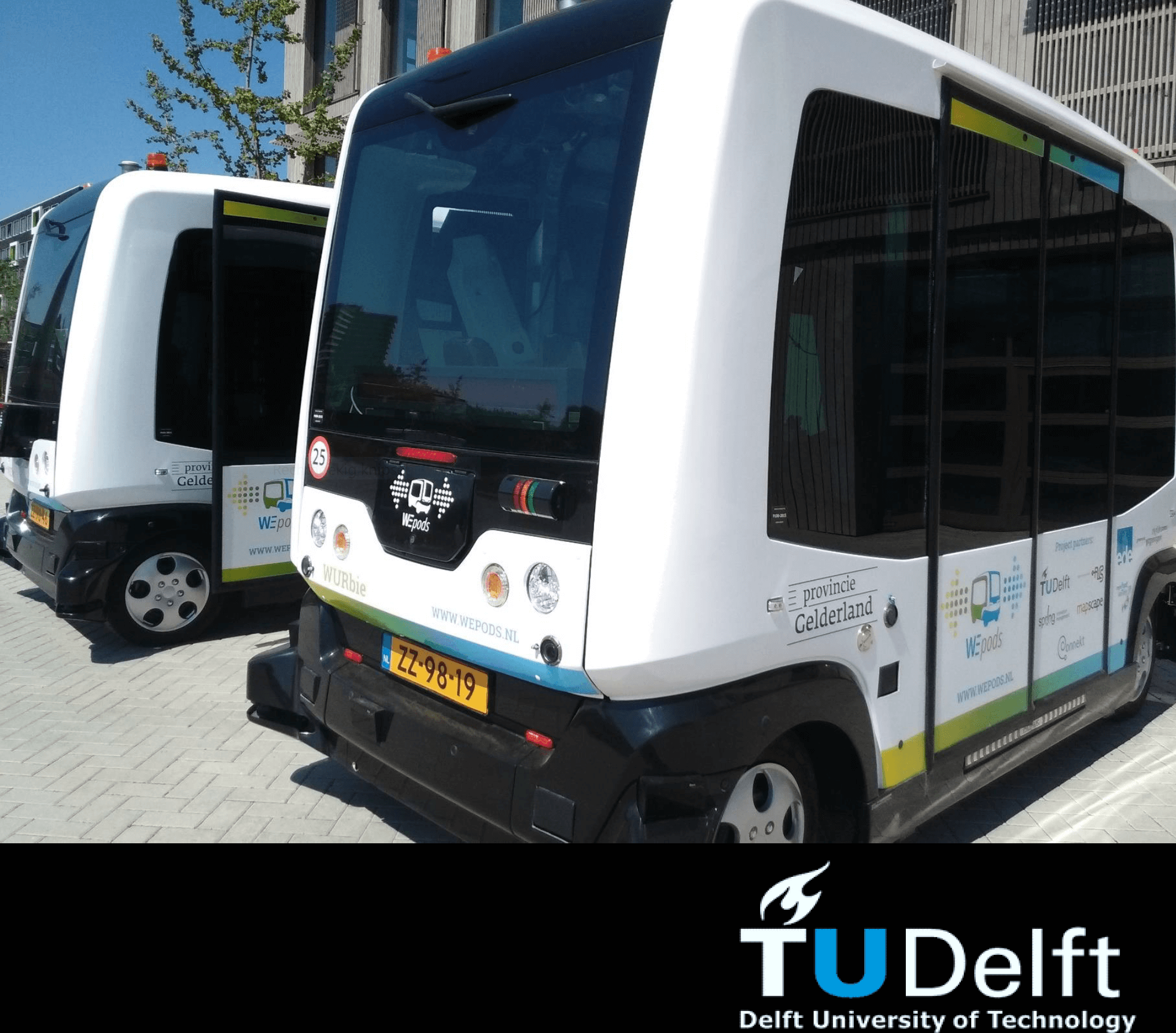Project
Safety of Pedestrians and Cyclists when Interacting with Automated Vehicles
A Case Study of the WEpods
Paola Rodríguez
Current research on automated vehicles focuses mainly on the drivers of automated vehicles, on its potential to improve the efficiency of traffic operations, safety, congestion and societal benefits, public’s acceptance of automated vehicles as a transport system and the willingness to buy automated vehicles. Nevertheless, there is a research gap in an equally important topic of research; the interactions of the automated vehicles with Vulnerable Road Users (VRU), i.e., cyclists and pedestrians.
The WEpods (shuttle buses) are the first automated pods on public roads amidst other traffic, for an extended period of time in the province of Gelderland, in the Netherlands. The main research question revolves around the safety perception of vulnerable road users (VRUs) when interacting with automated vehicles, specifically at unsignalised intersections, and their crossing behaviour in comparison with traditional motor vehicles. The data on road users’ perception was gathered through face-to-face interviews (?=22), a focus group (?=8), and an online survey (?=198). The results of this research showed that in terms of perceived safety, in general, VRUs (pedestrians and cyclists) feel significantly safer when sharing the road with the WEpods (max. speed of 15 ??/ℎ) compared to traditional motor vehicles (max. speed of 30 ??/ℎ). However, cyclists reported feeling less safe when interacting at unsignalised intersections with the automated vehicles, while there was not significant effect on pedestrians. Similarly, pedestrians more often opted for crossing facilities in the presence of the WEpods than in the presence of traditional motor vehicles (this can be interpreted as the result of perhaps feeling less safe), while no significant difference was reported for cyclists.
Some of the reasons that could explain the trust in the WEpods are its low operational speed and the trust of most (81.1%) of the VRUs in the automated technology. This makes them expect the WEpods will stop in all possible instances, even when other traffic participants violate traffic rules. Surprisingly, a significant proportion (63.2%) of the participants were not aware of the presence of the steward on board of the WEpods. On the other hand, variables such as the awareness of the steward and having interacted with the WEpods increased the perceived safety amongst VRUs. Moreover, eye contact and gestures use as part of the actual interaction with human drivers of traditional motor vehicles particularly when crossing, was reported to be of importance by the respondents and has also been previously reported in the literature. The VRUs who said that they rely on cues given by drivers, more often indicated a preference to cross at dedicated facilities in the presence of the WEpods than those who stated not to depend on this type of communication. In order to substitute this lack of “real” interaction, information about the WEpods’ operations appeared to be desired by most of the participants in the form of visual information or a mix of auditory and visual. Finally, it was found that individual characteristics of the VRUs, such as their gender and other demographic variables could also have an impact on their perceived safety of VRUs interacting with the WEpods.
The findings of this research point at a cautious attitude of cyclists and pedestrians in their interaction with automated vehicles. Nevertheless, this conservative mindset could be balanced by informing VRUs about both the features and the limitations of the WEpods, in conjunction with a suitable communication of intentions of the vehicle to its surroundings to achieve a safe interaction between VRUs and automated vehicles.
IN THE MEDIA
- THE GREEN VILLAGE: AN INNOVATIVE TESTING GROUND Published in: Cobouw
- THE NETHERLANDS ‘BEST PREPARED’ FOR AUTONOMOUS CARS, CYCLISTS MAKE ARRIVAL DIFFICULT Published in: NOS
- SENSOR USE WITH AUTONOMOUS VEHICLES Published in: De Volkskrant
- COMEDIAN PIETER JOUKE SEES POSSIBILITIES Published in: delft.nl
- RIJKSOVERHEID.NL: SPEECH BY MINISTER SCHULTZ VAN HAEGEN AT THE OPENING OF THE SMART MOBILITY RESEARCH LAB Published in: Rijksoverheid.nl
NEWS
- VR and Field Study to analyse interaction between pedestrians and autonomous vehicles Published on: Friday 22 February 2019
- Folluw up research car sickness Published on: Wednesday 19 December 2018
- Wanted: Research Opportunity at RADD Published on: Wednesday 07 February 2018
- Bikesim Published on: Monday 23 October 2017
- Opening of Researchlab Automated Driving Delft Published on: Saturday 24 June 2017

